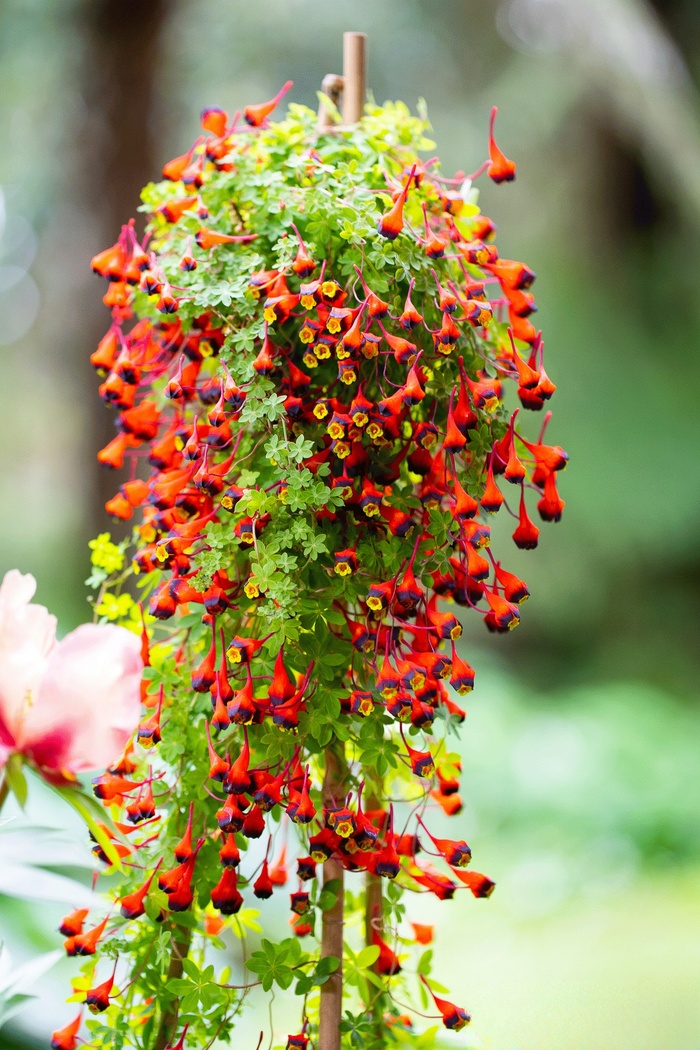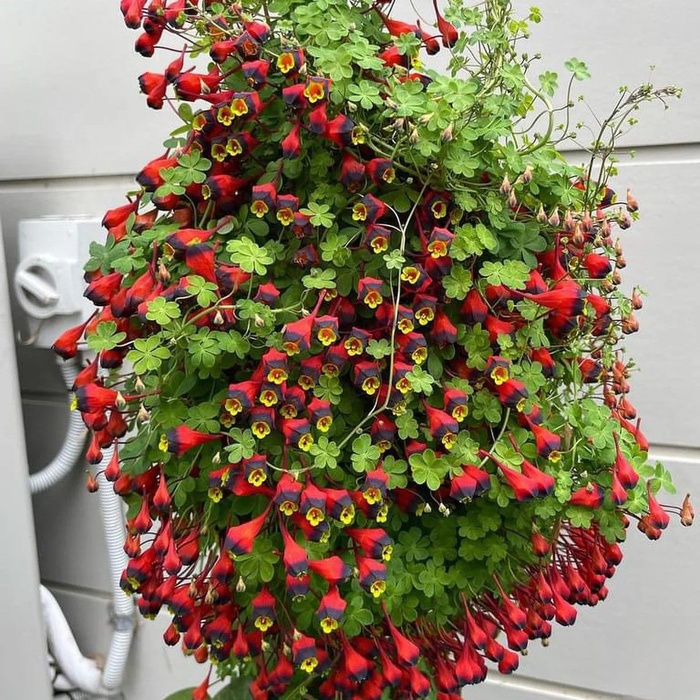Tropaeolum tricolor, commonly known as the Tri-color Nasturtium, is a stunning flowering plant native to South America. Known for its vibrant, three-colored flowers, this species of Tropaeolum stands out as one of the most striking members of the Nasturtium family. Its unique appearance, rapid growth, and vibrant blooms make it a favorite in gardens, particularly in tropical and subtropical climates. In this article, we will explore the taxonomy, physical features, natural habitat, cultivation, and care tips for this beautiful plant.

Tropaeolum tricolor is part of the Tropaeolaceae family, a group known for its ornamental and edible plants. This species is part of the Tropaeolum genus, which includes around 90 species, mostly native to South America. Tropaeolum tricolor is especially appreciated for its distinctive, multi-colored flowers.
Kingdom: Plantae
Division: Angiosperms
Class: Eudicots
Order: Brassicales
Family: Tropaeolaceae
Genus: Tropaeolum
Species: Tropaeolum tricolor
Native to regions in South America, particularly Chile, Peru, and Argentina, Tropaeolum tricolor thrives in high-altitude, temperate climates, typically growing in well-drained, nutrient-rich soils.
Tropaeolum tricolor is a fast-growing, climbing plant known for its vibrant and distinctive flowers. Here's a closer look at its main features:
Leaves:
The leaves of Tropaeolum tricolor are round or heart-shaped, typically deep green with a smooth texture. They are arranged alternately along the stem, and the long petioles (leaf stalks) give the plant a lush, trailing appearance. The foliage is dense and provides a striking contrast to the bright flowers.
Flowers:
The most outstanding feature of Tropaeolum tricolor is its flowers. These blossoms exhibit a spectacular blend of red, yellow, and blue. The petals are typically red or orange around the edges, with a bright yellow or orange center, and often display subtle purple or blue tinges near the base. Each flower has five petals, creating a striking tri-color effect. These flowers bloom in clusters, attracting pollinators like hummingbirds, bees, and butterflies. The flowers are medium-sized, usually 3 to 5 cm in diameter, and have a delicate, but showy presence.
Growth Habit:
Tropaeolum tricolor is an annual or perennial (depending on the climate) climbing plant. It can grow up to 1 to 2 meters in length, making it an excellent choice for hanging baskets, vertical gardens, or as a climber on trellises, fences, or walls. The plant produces long, flexible stems that can easily twine around supports. Its vigorous growth makes it ideal for adding color and texture to garden spaces quickly.
Tropaeolum tricolor is native to the mountainous regions of South America, particularly Chile, Peru, and Argentina, where it grows in temperate climates with cool, moist conditions. It thrives in areas that provide adequate rainfall and well-drained soils, but it can also tolerate drier conditions once established.
Habitat:
This plant is commonly found growing at higher altitudes, in temperate and subtropical climates. It prefers areas with good sun exposure and protection from extreme frost. In its natural habitat, it often grows in rocky or woodland edges, climbing over shrubs and trees to get access to light.
Climate Needs:
Tropaeolum tricolor thrives in moderate to warm temperatures and should be protected from frost. It grows best in regions with mild winters and moderately warm summers, which mimic its native highland environment. Frost can severely damage or kill the plant, so it's best suited for temperate or subtropical regions.
Though native to South America, Tropaeolum tricolor can be successfully grown in many parts of the world, especially in tropical and subtropical climates. Here's how to cultivate and care for this beautiful plant:
Soil Requirements:
Tropaeolum tricolor prefers well-drained, rich, and organic soil. It will thrive in loamy or sandy soils with a slightly acidic to neutral pH. If planting in heavy clay soils, be sure to improve drainage, as the plant is prone to root rot in soggy conditions. It benefits from soil that holds moisture but also drains well.
Light:
This plant requires full sun or partial shade. While it can tolerate some shade, it needs at least 6 hours of direct sunlight each day to flower profusely. Too much shade may result in fewer flowers and slower growth.
Watering:
Tropaeolum tricolor prefers consistently moist soil, especially during the growing season. However, it does not like to be waterlogged. Water deeply when the soil feels dry to the touch, but ensure the soil is well-drained to prevent root rot. In hotter climates, it will need more frequent watering to keep the soil moist.
Fertilization:
Tropaeolum tricolor does not require heavy fertilization. It benefits from a balanced, slow-release fertilizer applied in early spring, just as the growing season begins. Too much nitrogen can lead to excessive leafy growth at the expense of flowering, so it's best to use a fertilizer with a balanced ratio of nitrogen, phosphorus, and potassium.
Pruning and Support:
As a climbing plant, Tropaeolum tricolor will need support, such as a trellis, fence, or arbor. Prune the plant regularly to control its size and shape, removing dead or damaged stems to promote healthier growth and more blooms. Cutting back long, straggly stems will encourage bushier growth.

Tropaeolum tricolor plays an essential role in the local ecosystems of South America, providing nectar for pollinators such as hummingbirds and bees. Its vibrant flowers attract these pollinators, contributing to biodiversity in the region.
In gardens, Tropaeolum tricolor is highly valued for its decorative value. It’s often used as a climbing plant to decorate fences, walls, trellises, and hanging baskets. Its rapid growth and striking flowers make it an excellent choice for adding color and interest to garden spaces quickly. Additionally, it can serve as a ground cover in less formal garden settings.
Tropaeolum tricolor is an eye-catching and fast-growing plant that offers vibrant tri-colored blooms, making it a perfect choice for anyone looking to add a burst of color to their garden. Whether grown in containers, hanging baskets, or as a climbing vine, its showy flowers and lush green foliage will certainly brighten up any space. With proper care, it can thrive in a variety of climates and environments, bringing a touch of South America's beauty to your home garden.
References:
"South American Flora: A Guide to Native Plants"
"The Complete Guide to Flowering Plants" by David Smith
"Climbing Plants and Vines" by the Royal Horticultural Society
animal tags: Tropaeolaceae
We created this article in conjunction with AI technology, then made sure it was fact-checked and edited by a Animals Top editor.